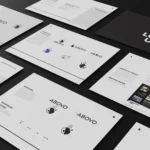If learning more about quality scores is what you are after, you have come to the right place, so keep on reading.
In an earlier blog, we touched on Google Ads, giving a general idea of what they are, how they work and how they can help grow your brand. We talked briefly about the two major components of effective Google Ads: Bidding and quality scores. If you are looking for more information on CPC, CPM or any other type of bidding, check this blog out and hopefully your questions will be settled.
Quality score, defined
The quality score of an ad is essentially an indication of how relevant that particular ad is for the corresponding landing page. According to the help section of Google Adwords,“The 1-10 quality score reported for each keyword in your account is an estimate of the quality of your ads and the landing pages triggered by them.” For example, if somebody searches for “reclaimed wood coffee table” and your ad leads them directly to the page of your website displaying the selection of reclaimed wood coffee tables you offer, your quality score will likely be higher than an ad leading them only to your homepage (or a page for self-standing hammocks).
Components of quality score
When it comes to determining the quality score of an ad, three factors are considered: Expected clickthrough rate, ad relevance and landing page experience. Let’s take a closer look at each of these.
1. Expected clickthrough rate
Expected clickthrough rate (CTR) is a status (above average, average or below average) assigned to each of your keywords and is an indication of whether or not a keyword is likely to lead to a click. The expected CTR status assigned to a keyword does not take into account the visibility, location or format of the ad, but rather looks at how the keyword has performed in the past and makes a prediction of how likely an ad click is.
If a keyword is given an “average” or “above average” status, there are no significant issues with the keyword’s expected CTR. If your keywords have either of these statuses assigned to them, there is no need to worry about their (expected) performance.
A keyword given a “below average” status means it’s probably a good idea to take a look at the copy within your ad and see if it can be adjusted to more closely aligned with your top keywords.
2. Ad Relevance
According to Google Adwords, ad relevance is, “A keyword status that measures how closely related your keyword is to your ads.” In other words, does your ad make sense for (or is it relevant to) the keywords included in the user’s search. If the ad you are running for reclaimed wood furniture appears for a search including “wooden furniture,” the ad is clearly relevant for that particular search. However, if the same ad appears when “decking lumber” is searched, your ad for reclaimed furniture is far less relevant to their search.
Like expected CTR, the same three statuses apply for ad relevance. If you see keywords with the status of average or above average, you are sitting pretty and most likely do not need to take action. For keywords given the below average status, the keywords you are using are causing your ads to appear in searches irrelevant to the ad; like the decking lumber example. To fix this issue, you may have to reevaluate your keywords and select a smaller group of words more specific to the ad.
3. Landing page experience
When somebody clicks on your ad, wherever they are taken is called the landing page. Landing page experience is the third component of a quality score and gives an above average, average or below average status to a keyword based on the landing page linked to the ad. Put simply, landing page experience reflects whether or not your landing page is closely aligned with whatever the ad is about. If your ad is for a specific product or service you offer, but the landing page is the general homepage, your landing page experience status is likely to be lower than if the landing page is for that particular product or service. In order to avoid the “below average” status for landing page experience, it is crucial the page linked to your ad is directly relevant to the keywords and text within the ad.
Putting it together
When expected CTR, ad relevance and landing page experience are combined, the result is an ad’s quality score. If the systems in place by Google Adwords determine your ad is relevant, and the landing page is helpful, then the ad’s quality score will likely be higher on the 1-10 scale. Being conscious of the three contributing factors of quality scores can greatly increase the effectiveness of your Google Ads and will help grow your brand.
Sources:
Ad relevance. Retrieved from:
https://support.google.com/adwords/answer/1659752
Expected clickthrough rate: Definition. Retrieved from:






